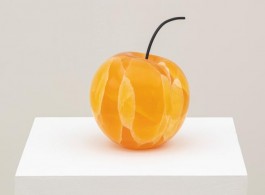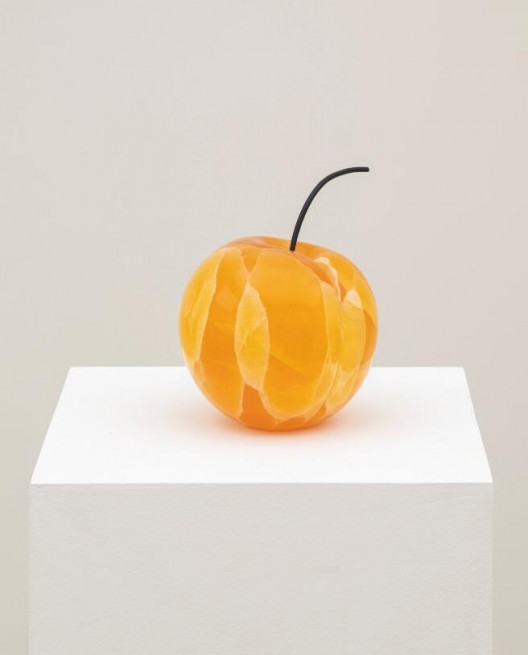Simon Lee Gallery, Hong Kong
Simon Lee Gallery, Hong Kong, is pleased to present a group exhibition featuring the works of Holly Coulis, Nevine Mahmoud and Christina Ramberg. Working in painting, sculpture and drawing respectively, all three artists transform traditional, art-historical subject matter often through an exuberant sense of individualism, opening interpretations of the human body and domestic objects to new possibilities.
Holly Coulis’ vibrant works take on the well-trodden genre of still life painting and infuse it with a pop sensibility, paring down objects including citrus fruits, pears, glasses and pitchers to their essential geometric forms. These domestic staples, painted in radiant hues, are displayed according to the abstracted perspective of Cubism, asking the viewer to engage with the underlying question posed by all still lifes: how do we adequately represent threedimensional objects in two-dimensional form?
If Coulis’ favoured subjects – fruits and vessels – hint towards the human form, Nevine Mahmoud’s erotic sculptures make the connection between body and household object explicit, creating a playful dialogue between material and content. Mahmoud masterfully renders fleshy parts of the body, such as breasts and tongues, as well as the suggestive, soft form of a peach, in non-malleable glass and stone. In ‘Breast Shade’ (2017), for instance, a pendant light shade takes on multiple meanings, simultaneously resembling a breast, a baby’s bottle and a conventional light fixture.
Meanwhile, Christina Ramberg’s drawings on view reflect the major motifs of her early work in the 1970s – torsos restructured by corsets, tangles of hair, the female figure. Ramberg’s work is acutely aware of how garments transform women’s bodies and articulates a compelling case for how that transformation could be related to painterly abstraction. The latter tendency she shares with Coulis and Mahmoud, who similarly push representation to the point of estrangement and impel us to reconsider how we relate to common forms.
Simon Lee Gallery, Hong Kong, is pleased to present a group exhibition featuring the works of Holly Coulis, Nevine Mahmoud and Christina Ramberg. Working in painting, sculpture and drawing respectively, all three artists transform traditional, art-historical subject matter often through an exuberant sense of individualism, opening interpretations of the human body and domestic objects to new possibilities.
Holly Coulis’ vibrant works take on the well-trodden genre of still life painting and infuse it with a pop sensibility, paring down objects including citrus fruits, pears, glasses and pitchers to their essential geometric forms. These domestic staples, painted in radiant hues, are displayed according to the abstracted perspective of Cubism, asking the viewer to engage with the underlying question posed by all still lifes: how do we adequately represent threedimensional objects in two-dimensional form?
If Coulis’ favoured subjects – fruits and vessels – hint towards the human form, Nevine Mahmoud’s erotic sculptures make the connection between body and household object explicit, creating a playful dialogue between material and content. Mahmoud masterfully renders fleshy parts of the body, such as breasts and tongues, as well as the suggestive, soft form of a peach, in non-malleable glass and stone. In ‘Breast Shade’ (2017), for instance, a pendant light shade takes on multiple meanings, simultaneously resembling a breast, a baby’s bottle and a conventional light fixture.
Meanwhile, Christina Ramberg’s drawings on view reflect the major motifs of her early work in the 1970s – torsos restructured by corsets, tangles of hair, the female figure. Ramberg’s work is acutely aware of how garments transform women’s bodies and articulates a compelling case for how that transformation could be related to painterly abstraction. The latter tendency she shares with Coulis and Mahmoud, who similarly push representation to the point of estrangement and impel us to reconsider how we relate to common forms.




